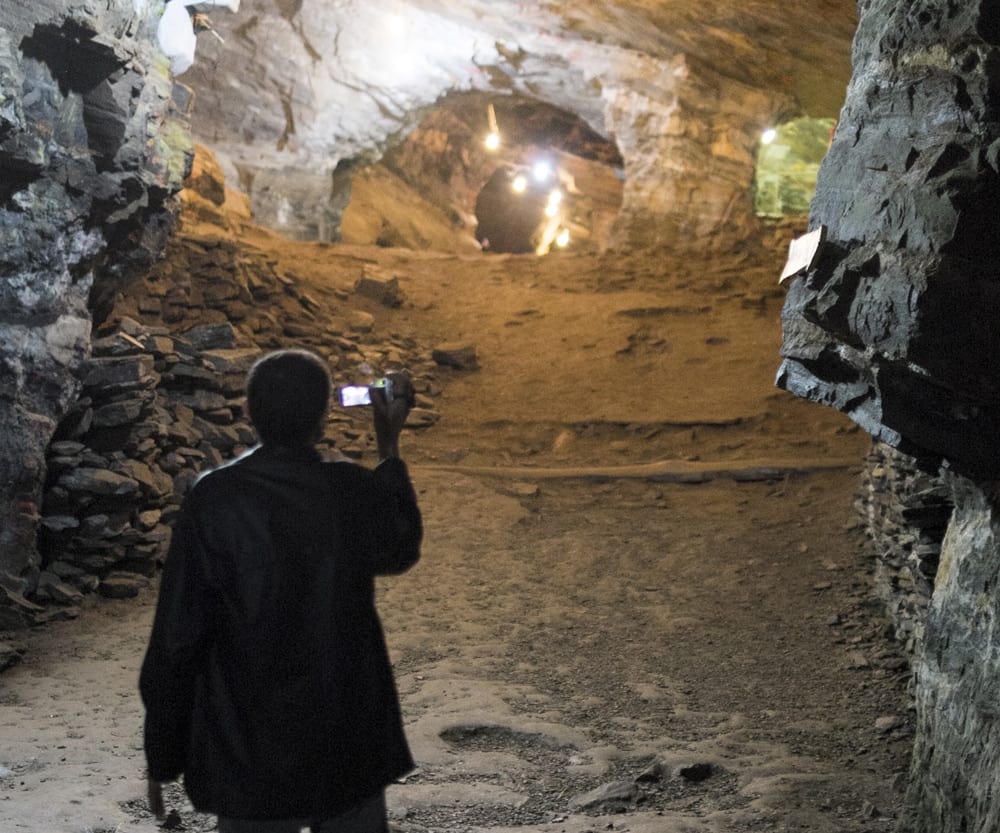Dear Readers,
The junior resource sector has been horrible over the last few years.
Lack of interest and capital, along with what many are calling strangulation by regulation, have forced many juniors to wilt away.
The sector has lost millions for investors.
But the space hasn’t been a complete dud.
As a matter of fact, despite the fall in the metals market, some of the stronger companies are thriving quite nicely.
One, in particular, just made a very big announcement that is about to gain some serious attention. This announcement will change the Company forever.
I’ll explain more in a bit.
First, let’s talk about the biggest transaction in the gold market this year.
The Biggest Gold Takeover
Just a few months ago, Yamana and Agnico Eagle acquired Osisko Mining (Osisko) in one of the largest takeovers of any gold company in Canadian history.
Like every major success story, Osisko had a beginning.
Just like the majority of major new gold discoveries, Osisko started with a past producing asset that was essentially shelved because of lower gold prices.
Osisko first began drilling on it’s property because of strong indications that its former Canadian Malartic underground mine, which produced more than one million ounces of gold from 1935 to 1965 from ore containing three to six grams of gold per tonne, still had lots of potential.
In less than six years after its first exploration drills holes, Osisko’s management had not only put its Canadian Malartic Mine into production, but also managed to discover and acquire (through takeovers) more than 9 million ounces of gold reserves.
With high grades and a vast portfolio of strong assets in one of the most favourable mining jurisdictions in the world, Osisko soon became the focus of every gold major.
Via the Globe and Mail, before the takeover:
“Osisko’s Canadian Malartic mine has now become a prized asset. The mine would give its suitors access to more than nine million ounces of bullion reserves and production in Quebec, a place often touted as one of the world’s most stable jurisdictions for mining.
Yamana would be able to diversify away from its operations in South America. Agnico would be able to find savings in Quebec, where three of its mines are scattered along the same highway as Canadian Malartic. Goldcorp would also be able to cut costs in Quebec, where it is developing a gold mine.”
The Canadian Malartic Mine is now Canada’s largest gold mine.
So why am I telling you this?
Why am I telling you a story that’s already passed the point of success?
One More Clue
For those of you who have been following this letter, you’re likely already reading between the lines.
But let me give you one more clue.
Osisko was named after Quebec’s Osisko Lake because of its historical significance.
The lake, located within Quebec’s portion of the Abitibi gold belt in the region of Rouyn-Noranda, is where Noranda founder Edmond Henry Horne made his first major mineral discovery back in 1920.
His discovery eventually became the famous Horne Mine, which was one of the richest VMS mines in Canada, producing over 54 Mt @ 6.1 g/t gold, 13 g/t silver and 2.22% copper.
The mine itself spurred the massive Rouyn-Noranda camp, which has been host to more than 50 current and former producing mines.
It’s clear that the Rouyn-Noranda camp is very special. It’s also clear why every major wants to be in the area.
But the majority of the camp doesn’t belong to them…
The Last One Standing
With the acquisition of Osisko by Agnico Eagle and Yamana, there’s only one junior left who controls the last of the large Abitibi camps not owned by a major gold producer.
Not only does this junior own nearly 70 percent of the entire Rouyn-Noranda camp, but it’s also anchored by the famous Horne Mine, which was operated by Noranda from 1927 to 1976 and produced 11.6 million ounces of gold and 2.5 billion pounds of copper.
But that’s not all.
It just made a very special announcement this week that will change the Company’s future forever.
This junior is none other than…
Falco Resources Ltd. (TSX.V: FPC)
Earlier this year, I wrote a report on Falco Resources Ltd. (Falco) and explained all of the reasons why I fell in love with its assets.
If you haven’t read that report, I strongly suggest you catch up by CLICKING HERE or following this link:
http://www.equedia.com/canadas-next-big-discovery/
At the time of my first report, Falco had a vast land package without a current 43-101 resource to prove its worth.
Since that time, Falco has delineated an initial inferred resource totaling 25.3-million tonnes grading 2.64 g/t gold, 0.23% copper and 0.7% zinc, for 2.2-million ounces of contained gold at its Horne 5 deposit.
A quick comparison between the assets of Falco and Osisko immediately shows striking similarities; both are exploiting strong former past producers, and both are owners of a very large land package in the prolific Abitibi belt.
The biggest difference between the two now is that Osisko has become a gold producer owned by two majors, while Falco now has the largest undeveloped deposit in the region.
As I mentioned earlier, modern methods of exploration – under Sean Roosen’s guidance – turned Osisko’s past producing asset into Canada’s largest gold mine.
No modern method of exploration has ever been attempted in and around Falco’s former producing assets. As a matter of fact, much of the gold produced on its flagship asset was a by-product of mining other metals.
For a camp that has produced over 19M ounces of gold, that’s insane.
Imagine what modern methods of discovery could uncover for an asset that has produced millions of ounces of gold, yet has never truly been explored for gold?
The possibilities could prove to be extremely rewarding.
I am not the only one who thinks so.
The Next Osisko?
A month ago, Osisko Gold Royalties (TSX: OR), headed by Sean Roosen himself, announced that it is taking a majority position in Falco by intending to raise its ownership in Falco to 14.99%.
Then, just last week, Falco told the world that Sean Roosen, the man responsible for developing the permitting and financing strategy that brought the $1-billion Canadian Malartic mine into production, is now not only a director of Falco, but also its newest Chairman.
This means Falco now has even greater access to capital, incredible technical bench strength, and a new audience of investors who made millions of dollars from investing in Osisko in the early days.
This announcement already has the industry excited.
I just spoke to Falco’s CEO Trent Mell who told me that Falco has 10 analysts lined up to do a site visit in less than a couple of weeks.
Let me connect the dots even further.
We all know that Sean didn’t want to sell Osisko so quickly; not before Osisko had a chance to show what it could do on its own.
Via Financial Post:
“Sean Roosen never wanted to sell Osisko Mining Corp.
The chief executive of Quebec’s biggest home-grown miner has said repeatedly that Goldcorp Inc. ambushed him with a hostile offer before he even got the chance to prove what kind of money his main production asset, the Malartic gold mine, could make for investors.”
If Sean ever wanted to create another Osisko, Falco may be his best chance because, as Sean put it himself, “Falco controls the last of the large Abitibi camps that is not owned by a major gold producer.”
This also means anyone interested in owning a big district play in the Abitibi without investing in a major would have to look at Falco.
In the coming months, I expect Falco to gain a lot of momentum with Sean’s help.
Falco has also already begun turning its drills on a large borehole anomaly with conductivities typical of massive sulphide mineralization at its Lac Hervé property. This is pretty straightforward; Falco is either going to hit graphite, or hit sulphides.
If it hits sulphides, there’s a chance it could prove to be economic. It would most certainly stir up some excitement since the area has never been drilled. This itself could be a game changer.
Falco is now into the hole and it might be two or three weeks before we see any results.
But don’t forget that this is just one of the many opportunities for Falco that could prove rewarding using modern methods of exploration.
I would not be surprised to see further drill programs come online with Sean’s aggressive influence.
A Big Bullseye
With the addition of Sean Roosen as chairman and director, Falco may have just received the spark it needed to move forward.
Furthermore, since the release of its 43-101 in March, Falco has brought on three new board members who have all been a large part of building mines in the Abitibi Greenstone Belt. These mines include Canadian Malartic, Laronde, Goldex, Lappa, and Young Davidson.
With so many poorly managed companies having wilted away, the remaining survivors are now in a place to take advantage of the interest that remains within the sector.
Falco’s board is now stacked with big players with massive success in the Abitibi. And since, in Sean’s own words, “Falco controls the last of the large Abitibi camps that is not owned by a major gold producer,” I would bet that Falco has a big bullseye painted on its back.
The Equedia Letter
Disclaimer
We’re biased towards Falco because its an advertiser and we own options in the Company. Falco has also been mentioned in InvestmentDiary, a premium newsletter service written by Ivan Lo, earlier this week. You can do the math. Our reputation is built upon the companies we feature. That is why we invest in every company we feature in our Equedia Reports, including Falco. It’s your money to invest and we don’t share in your profits or your losses, so please take responsibility for doing your own due diligence. Remember, past performance is not indicative of future performance. Just because many of the companies in our previous Equedia Reports have done well, doesn’t mean they all will.
Furthermore, Falco Pacific Resource Group Inc. and its management have no control over our editorial content and any opinions expressed are those of our own. We’re not obligated to write a report on any of our advertisers and we’re not obligated to talk about them just because they advertise with us.













Ivan,
I enjoy reading your articles. They are well-researched, informative and replete with substantiating evidence in support of your thesis.
Your article about Falco Resources Ltd. is compelling. I had, in fact, purchased shares of another junior miner based upon your assessment and my due diligence.
Another company which I purchased (based upon your comments and my due diligence) and sold for a very satisfactory profit is Electronic Cigarettes. I would be interested to read your most-current thoughts regarding ECIG.
Thanks very much for sharing your knowledge and insights with this loyal reader. I look forward to your articles every Sunday.
Sincerely,
David Hernandez
Colonel
United States Air Force